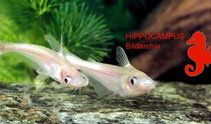| Family: |
Schilbeidae (Schilbid catfishes) |
| Max. size: |
35 cm SL (male/unsexed); max.weight: 250.0 g; max. reported age: 7 years |
| Environment: |
demersal; freshwater; depth range 4 - 69 m, potamodromous |
| Distribution: |
Africa: Nilo-Sudanese species, known from the Nile basin and in West Africa from the Senegal River eastwards to the Cross, Wouri and Sanaga River, including the Chad basin (Ref. 43912). Various reports, including from the Ogowe and Congo River basin or Zambia and Zimbabwe, are based on misidentifications (Ref. 43912). Reports from Angola and Tanzania are questionable and need confirmation. |
| Diagnosis: |
Dorsal spines (total): 1; Dorsal soft rays (total): 6-6. Diagnosis: adipose fin present (Ref. 43912, 57127, 81643) and fully developed (Ref. (Ref. 57127, 81643). Anterior nostrils more closer to each other than to posterior ones; inner margin of pectoral-fin spine strongly denticulate posteriorly (Ref. 43912, 57127, 81643). Nasal barbel reaching to anterior eye margin (Ref. 57127, 81643), but never extending beyond posterior margin of eye (Ref. 43912, 57127, 81643). Mouth subterminal (Ref. 57127, 81643), snout reaching beyond lower jaw (Ref. 43912). 45-64 branched anal-fin rays and 8-15 gill rakers on lower limb of first gill arch (Ref. 43912, 57127, 81643).
Description: 10 branchiostegal rays on one side of head; caudal peduncle longer than deep. nasal and inner mandibular barbel never reach beyond posterior border of eye; maxillary barbel at least reaches to anterior border of eye and at maximum to just beyond posterior border of opercle; outer mandibular barbel at maximum reaches to just beyond anterior border of opercle; posterior border of dorsal spine feebly serrated (Ref. 43912). Schilbe mystus is, in many respects, strikingly similar to S. grenfelli, and also seems closely related to S. banguelensis and S. nyongensis, both species with the anterior nostrils closer to each other than the posterior ones and with a rather small inferior mouth; S. grenfelli and S. mystus are allopatric species, the inner side of the pectoral spine being finely serrated in the former while coarsely serrated in the latter; in S. banguelensis the nasal barbel always reaches beyond the orbit and the inner side of the pectoral spine is feebly serrated; in S. nyongensis the nasals barbel always reaches beyond the orbit while it never reaches beyond the eye in S. mystus (Ref. 43912).
Coloration: ground colour generally silvery-white; head and back brownish, fins usually colourless (Ref. 57127) or pale yellow (Ref. 81643), sometimes tinged with black (Ref. 43912). Flanks and belly usually whitish, silver (Ref. 81643). |
| Biology: |
Lacustrine as well as fluviatile species, confined to lakes and moderate to large rivers (Ref. 43912). Shoals in standing or slowly flowing open water with emergent or submerged vegetation. Generally more active at night or in subdued light. Feed from mid-water and surface waters on a wide variety of foods including fish, insects, shrimps, snails, plant seeds, and fruit. Oviparous, eggs are unguarded (Ref. 205). Often important spawning migrations occur (Ref. 43912). Breed during the rainy season and may be either a single or multiple spawner in different localities, laying eggs on vegetation. May live up to 6-7 years (Ref. 7248). Max total length 45.0mm (Ref. 43912). Also caught with drawnets. In general considered as a flavoured, first class eating fish (Ref. 43912). |
| IUCN Red List Status: |
Least Concern (LC); Date assessed: 04 November 2019 Ref. (130435)
|
| Threat to humans: |
harmless |
Source and more info: www.fishbase.org. For personal, classroom, and other internal use only. Not for publication.

